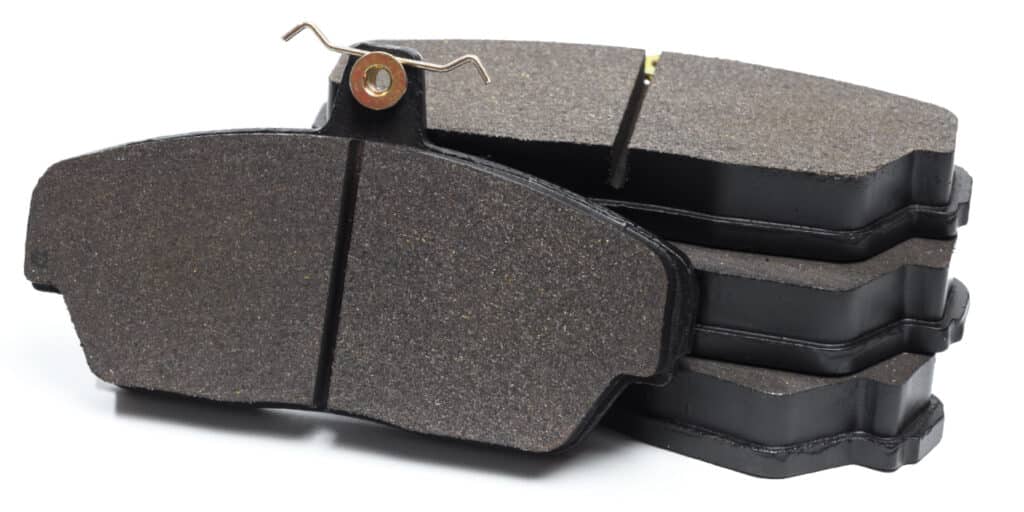Brake pads are a crucial component of a vehicle’s braking system, vital in ensuring the safety of the driver, passengers, and other road users.
These small but mighty parts create the necessary friction to slow down and stop a vehicle when the brake pedal is pressed.
Over time, brake pads undergo wear and tear due to constant use, making it essential for vehicle owners to know when to replace them to maintain optimal braking performance.
Neglecting timely brake pad replacement can reduce stopping power, increase stopping distances, and even complete brake failure in extreme cases.
This article will discuss the importance of timely brake pad replacement and the signs indicating it’s time for new pads.
This will ultimately contribute to overall vehicle safety and potentially prevent accidents caused by compromised braking systems.
How Long Do Brake Pads Last?
The lifespan of brake pads can vary significantly, ranging from as little as the length of one or two track days to around 70,000 miles.
On average, brake pads last approximately 45,000 miles. Several key factors, including driving style, environment, and the type of brake pad material used, influence the longevity of brake pads.
Aggressive driving styles are characterized by frequent hard and abrupt braking, leading to more rapid brake pad wear than smooth and gradual braking techniques.
The environment in which a vehicle is driven also plays a role, with heavy traffic and frequent stop-and-go conditions in urban areas causing more rapid brake pad wear than in highway or rural driving.
Additionally, mountainous regions or areas with steep inclines can accelerate brake pad wear due to the extra strain on the braking system.
The type of brake pad material is another crucial factor affecting longevity.
Organic brake pads, made from rubber, glass, and Kevlar materials, are the least expensive but wear down more quickly.
Semi-metallic pads, which include metal fibers mixed with organic materials, offer improved performance and durability.
Ceramic brake pads, composed of ceramic fibers and copper, provide the best-stopping power and have the longest lifespan among the three types, but they are more expensive.
Signs That Indicate Your Brake Pads Need Replacement
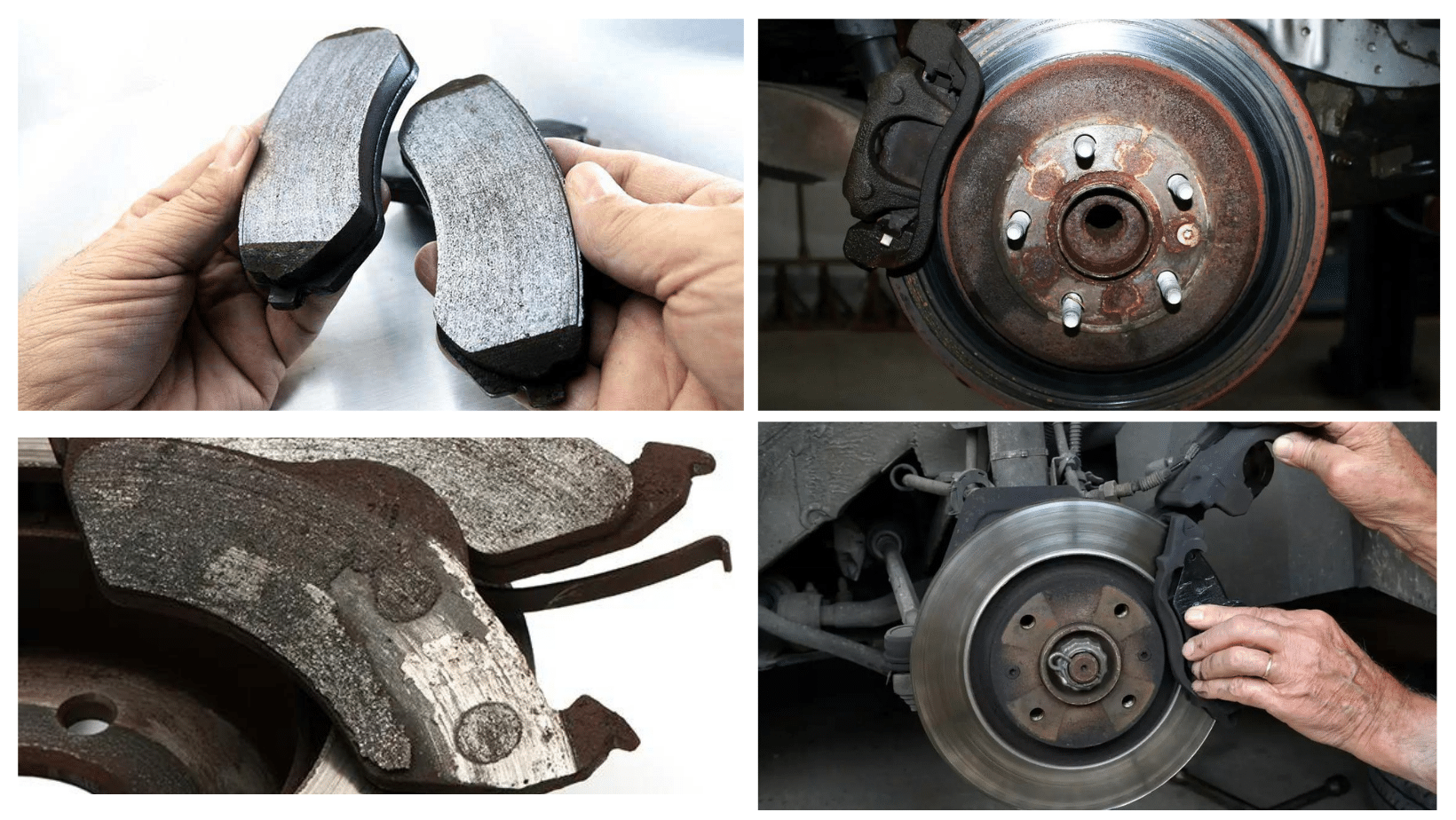
As a mechanic with years of experience working on various vehicles, I’ve encountered numerous instances where timely brake pad replacement has prevented more serious issues and ensured the safety of drivers and passengers. It’s crucial to recognize the signs that indicate your brake pads are due for replacement. Here are some key indicators to watch out for:
- Screeching, grinding, or metal-on-metal sounds: If you hear a high-pitched screeching noise when applying the brakes, your brake pads are likely equipped with wear indicators. These small metal strips are designed to alert drivers when the friction material has worn down to a critical level. Ignoring this warning sign can lead to a more alarming grinding or metal-on-metal sound, indicating that the brake pad backing plate is making direct contact with the rotor, which can cause damage and compromise your braking ability.
- Pulsation in the brake pedal: If you experience a pulsating sensation in the brake pedal when slowing down, it may suggest that your brake pads are not making proper contact with the rotors. This uneven wear can cause the rotors to warp, reducing braking efficiency and an uncomfortable pulsation. It’s important to note that this sensation differs from the normal vibration caused by the anti-lock braking system (ABS) engaging on slippery surfaces.
- Decreased braking performance: You may become accustomed to your brakes’ responsiveness over time. If you notice that your vehicle requires more distance to come to a stop or that the brake pedal feels spongy or less responsive than usual, it could indicate that your brake pads are worn out. This decreased performance can be attributed to various factors, such as worn friction material, low brake fluid levels, or air in the brake lines.
- Visible wear indicator: Many brake pads have a visual wear indicator and a small notch or groove on the edge. As the friction material wears down, this indicator becomes increasingly visible. Once the wear indicator is flush with the brake pad’s surface, it’s a clear sign that the pads need to be replaced. Regularly inspecting your brake pads can help you catch this visual cue before more serious symptoms arise.
- Brake pad thickness below 1/4 inch: If you’re comfortable removing your wheels and inspecting your brake pads, you can check their thickness using a ruler or caliper. Generally, if the friction material on your brake pads has worn down to less than 1/4 inch (6.35 mm) in thickness, it’s time to replace them. Allowing the pads to wear beyond this point can reduce braking performance and potentially damage other system components.
By being attentive to these signs and addressing them promptly, you can maintain the integrity of your vehicle’s braking system, prevent costly repairs, and, most importantly, ensure your safety and that of your passengers.
What Are the Consequences of Ignoring Worn-Out Brake Pads?

You might face multiple consequences if you keep ignoring the worn-out brake pads.
In this section, we have mentioned a few elements that you must pay keen attention to in order to mitigate the loss.
1. Increased Stopping Distances
- As brake pads wear down, they lose their ability to generate sufficient friction against the rotors.
- This loss of friction results in longer distances needed to bring your vehicle to a complete stop.
- Increased stopping distances can be particularly dangerous in emergency braking situations, where every second counts.
2. Potential Brake Failure
- If brake pads are allowed to wear down completely, it can lead to total brake failure.
- The metal backing plate touches the rotor when no friction material remains on the pads.
- This metal-on-metal contact can cause severe damage to the rotor and render the brakes inoperable.
Brake failure poses a serious accident risk for you, your passengers, and other road users.
3. Glazed Brake Pads
- Neglecting to replace worn brake pads can cause the friction material to become excessively hard and crystallized.
- This hardening process, known as glazing, occurs due to extreme heat buildup generated by metal-on-metal contact.
- Glazed brake pads have a smooth, shiny surface that reduces their ability to grip the rotors effectively.
- The reduced friction between the pads and rotors significantly diminishes your vehicle’s braking performance.
4. Compromised Stopping Power
- When brake pads become glazed, your vehicle’s overall stopping power is severely compromised.
- You may experience a “grabby” or unresponsive feeling when pressing the brake pedal as the pads struggle to grip the rotors.
- This lack of responsiveness can make it difficult to control your vehicle safely, especially in situations that require quick and precise braking.
- Compromised stopping power increases the risk of collisions and makes navigating emergencies on the road more challenging.
By promptly addressing worn brake pads and replacing them when necessary, you can avoid these dangerous consequences and ensure your safety, that of your passengers, and that of others on the road.
Regular brake maintenance and attention to warning signs can help keep your vehicle’s braking system in optimal condition.
Different Types of Brake Pads and Their Advantages
When choosing the right brake pads for your vehicle, it’s essential to understand the different types available and their respective advantages.
The three main categories of brake pad materials are:
1. Organic or Non-Metallic Brake Pads
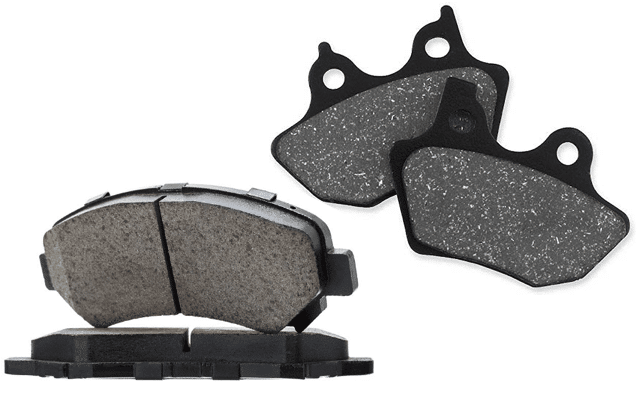
Made from carbon, rubber, and fiberglass but do not contain metal.
Typically, it is the least expensive option among brake pad materials. It offers relatively quiet operation and produces minimal noise during braking.
Ideal for drivers who prioritize a quieter braking experience and have a tighter budget
2. Semi-Metallic Brake Pads
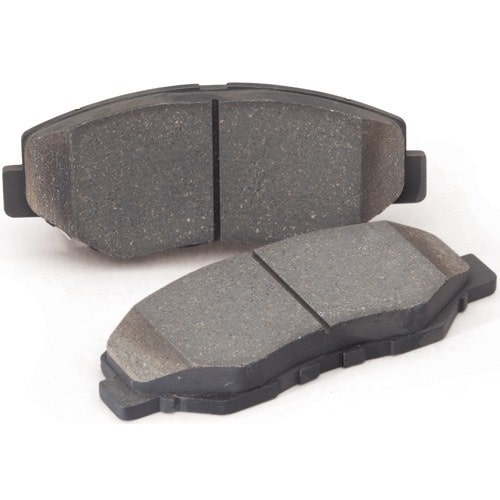
It consists of a mix of metal fibers and organic materials. It provides improved heat dissipation compared to organic pads, making it suitable for more demanding driving conditions.
They offer better performance and durability than organic pads, and they have a longer lifespan. However, they may produce more brake dust and noise than organic pads.
Suitable for drivers who require better performance and longevity and are willing to accept slightly increased noise and dust
3. Ceramic Brake Pads
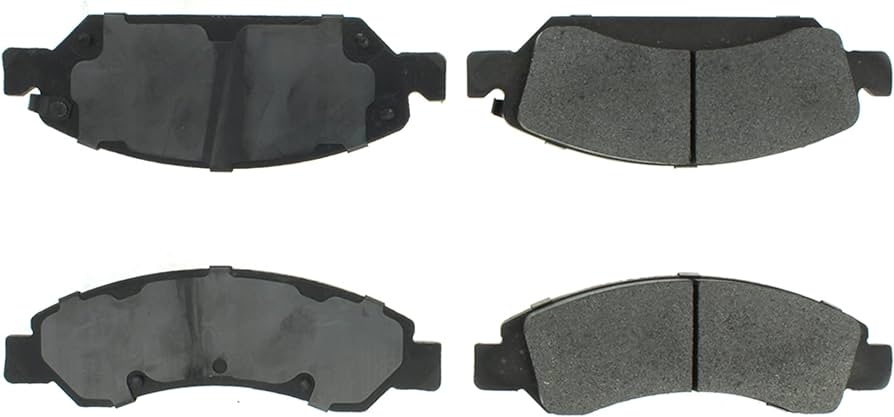
Constructed from ceramic fibers and copper, these pads offer superior stopping power, making them ideal for high-performance vehicles.
Compared to semi-metallic pads, they produce less noise and brake dust.
A warm-up period is required to achieve optimal performance. Due to their premium materials and performance, they are priced higher.
Perfect for drivers who demand the best braking performance and are willing to invest in top-tier brake pads.
Moreover, there are different factors that require your attention while finalizing the selection of your brake pads.
In the following section, we have detailed some of the essential points to note.
- Driving style and habits: Aggressive or frequent braking may require more durable pads like semi-metallic or ceramic
- Vehicle type and purpose: High-performance vehicles or those used for towing may benefit from ceramic pads
- Noise preferences: If a quieter braking experience is a priority, organic or ceramic pads may be the best choice
- Budget constraints: Organic pads are the most affordable, while ceramic pads come at a higher cost
- Environmental factors: Dusty or high-temperature conditions may warrant the use of semi-metallic or ceramic pads for better heat dissipation
Ultimately, the right choice of brake pad material depends on your specific needs, preferences, and vehicle requirements.
Consulting with a professional mechanic can help you make an informed decision based on your unique situation.
Final Words
Understanding when to replace brake pads and prioritizing regular maintenance is critical to ensuring road safety for yourself and others.
Throughout this article, we’ve explored the factors influencing brake pad longevity, the signs indicating it’s time for a replacement, and the potential consequences of ignoring worn-out brake pads.
Regular inspections, maintenance, and understanding of the different brake pad materials available empower you to make informed decisions that align with your driving needs and preferences.
Your commitment to brake pad maintenance enhances your safety and promotes responsible driving practices that make our roads safer.
I hope this article is helpful to your needs and requirements and enhances your vision toward monitoring the importance of timely brake pad replacement for your total Safety.

